#Şehzade Süleyman
Text




This golden and silver kaftan was first worn by the court jester in the first episode of the first season of Magnificent Century. It was slightly altered before it was worn again by Şehzade Bayezid in the seventh episode of the third season. The kaftan can be seen again on Şehzade Murad (later Sultan Murad III) in the twenty-fourth episode of the fourth season.
The kaftan makes a final appearance on Şehzade Süleyman (later Sultan Süleyman II) in the thirtieth and final episode of the second season of Magnificent Century: Kösem.
#Muhteşem Yüzyıl#Muhteşem Yüzyıl: Kösem#Magnificent Century#Magnificent Century Kösem#Magnificent Century Kosem#period drama#costume drama#historical drama#Unnamed Harem Members#Şehzade Bayezid#Sehzade Bayezid#Şehzade Bayezid (Son of Hürrem)#Şehzade Murad#Sehzade Murade#Murad III#Şehzade Murad (Son of Nurbanu)#Şehzade Süleyman#Sehzade Suleyman#Süleyman II#Suleyman II#Şehzade Süleyman (Son of Dilaşub)#reused costumes#recycled costumes
12 notes
·
View notes
Note
Do you think the reason that Suleyman (out of all his kids) had the best relationship with Mihrimah and Cihangir or outwardly expressed the most love for them was bc he never considered them threats to his throne? Mihrimah was a girl and Cihangir was disabled so there was no way either of them would ever sit the throne. They weren’t strong healthy ambitious boys who could one day grow to overthrow him like his father Selim did to his grandfather. For Mihrimah and Cihangir, he could just be their dad and they could just be his kids
That definitely does seem to be a part of it. After all, Süleyman does get weirdly competitive with his sons who represent more of a threat. Particularly Mustafa. And in terms of that, Mihrimah and Cihangir are at the opposite end of the scale.
That said, I do think there's also more to it than that. In Mihrimah's case I also think that part of is the 'Daddy's little princess' phenomenon. By which I mean that a certain type of powerful man will dote on his daughter in particular. I'm sure someone else observed this about their dynamic but I can't remember who. That definitely seems to be partially the case. It's kind of similar to how in Succession Shiv seems to be the closest of his children to Logan's 'favourite' if you could use that word. The fact that he has the nickname 'Pinky' for her. Where Süleyman will do anything for 'his sun and moon'.
As for Cihangir, as the youngest and with his disability he is the baby of the family. And so that probably plays a role in how both of his parents feel about him. This is especially apparent with Hürrem and her protectiveness over him but I also think it plays a role with Süleyman as well.
11 notes
·
View notes
Text









—Zahit Atçıl, Why Did Süleyman the Magnificent Execute His Son Şehzade Mustafa in 1553?
25 notes
·
View notes
Text

As folk may know, Selim is actually a distant descendent of Kindred Elder, Galeb Bazory, previously known as Şehzade Süleyman and refers to him as his 'uncle' just as Galeb refers to Selim as his 'nephew'. But a big part of the reason for Galeb's very discreet fondness for Selim despite them being natural enemies is actually because he reminds him of his late brother, Mustafa III, both in personality as well as appearance as they share similar facial features and hair colour. As much as it hurts Galeb to see his late brother's likeness and be reminded of the life he eternally longs for it does also bring him a certain amount of comfort as if reigniting a part of him that he'd buried away for over three centuries now. It's both pleasant and terrifying to him to realise that a part of Süleyman still exists inside him and that he finds himself protective of Selim just as he had been with his younger brother, Mustafa, until he was forced to flee Constantinople, never seeing any of his family again. Until now.
9 notes
·
View notes
Text
Madonna-Whore Complex: Mahidevran & Hürrem
While I’m sure anyone who reads this post has some idea of what the Madonna-Whore complex is, I am going to give a definition regarding it just to be thorough. Essentially, the Madonna-Whore complex is the idea that people will attempt to categorize women into two categories: the sacred (Madonna) and the profane (the Whore). The Madonna is admired and respected by all yet is not sexually desired while the Whore is deemed vulgar and unworthy of respect but is sexually desirable.
I do believe Magnificent Century did attempt to subvert this but failed to do enough to successfully undermine the complex in their audience. The show’s main attempt to subvert the Madonna-Whore complex by establishing Hürrem as an underdog. To give credit where it’s due, I will list their attempts to do so.
Out of the two women, the audience meets Hürrem (then known as Aleksandra) first and is given her backstory immediately to make her more sympathetic.
Mahidevran’s background is mostly left unexplored with the only exception being that it is established she has been Süleyman’s favorite for some time despite attempts from others to take her place.
It is quickly established that Süleyman has little to no romantic/sexual interest in Mahidevran. (I believe this point may have backfired some as part of the Madonna is her undesirability as a sexual figure)
Hürrem's status as the underdog is further established when Hafsa is led to interfere and send Mahidevran to the sultan’s chambers in Hürrem’s place once Daye Hatun relays Hürrem and Maria’s conversation out-of-context.
Hürrem is unfairly imprisoned for disrespecting Mahidevran after being goaded into a fight (where, in a fit of irony, Mahidevran refuses to respect that Süleyman has re-named Aleksandra Hürrem). Hürrem is denied food and water during her imprisonment which is implied to last at least long enough to cause dehydration (24 to 48 hours is my guess) and which would’ve lasted longer if Süleyman hadn’t intervened.
After being severely beaten by Mahidevran, Hürrem is denied appropriate medical care by the harem staff in order to protect Mahidevran until Süleyman intervenes.
An attempt is made to marry off Hürrem behind Süleyman’s back in the interest of protecting Mahidevran and Hafsa’s anger towards Süleyman’s intervention on Hürrem's behalf.
Hürrem almost loses her life and that of her unborn child’s when she is poisoned by Mahidevran and then is subject to psychological manipulation by Hafsa to protect Mahidevran.
While Hürrem is heavily pregnant, Hürrem’s attendant (Gülnihal) is taken away from her side by Ibrahim. Hafsa’s reaction to this is one of approval despite the danger this ended up posing to her unborn grandchild.
After the birth of Mehmet, Hafsa throws undeniably classist insults against Hürrem, further establishing the latter as the underdog.
After Hürrem slaps Gülnihal for sleeping with the sultan, Hafsa threatens to remove Mehmet from his mother despite having advocated for Mahidevran to remain with Mustafa on two separate occasions. One of those occasions endangered the lives of two dynasty members- the unborn Mehmet and the Sultan himself.
Hürrem is denied her title as the mother of şehzade after the birth of her son. She is referred to as Hürrem Hatun, the title of a favorite, even after Mihrimah and her second şehzade, Selim are born.
Hafsa acts on incredibly circumstantial evidence against Hürrem after Ayse Hatun is murdered. Hafsa omits that this evidence is circumstantial when speaking with Süleyman. This results in Hürrem being unfairly separated from her son, Mehmet and exiled to the Old Palace.
During Hürrem’s time in exile, it is made clear that Mahidevran’s troubles are far from over as she worries over Gülfem being summoned by the Sultan.
In return for being exonerated, Hürrem is forced to apologize to Mahidevran, who has attempted to kill her twice.
It is mentioned once or twice that Gülfem was Süleyman’s first favorite and gave him a son. It is further implied that Mahidevran took her place.
Yet apparently establishing Hürrem as the underdog and establishing that Süleyman no longer had any interest in Mahidevran was not enough to subvert the Madonna-Whore complex as many in the audience viewed Hürrem as a “homewrecker” and “the other woman” in this scenario. I propose this is because the show is making a clear attempt to cast the characters as complex and thus the audience is given reason to sympathize with Mahidevran as well. She suffers a miscarriage and admits she hasn’t been struggling to conceive these last several years (casting her as the wronged woman whose fault (infertility) is beyond her control in this scenario). So what could the show have done differently in order to preserve sympathy for Mahidevran while also ensuring that most audience members would not apply the Madonna-whore complex to the situation the show presents? {the one is bold requires less re-structuring of the show and thus might be the easiest way to do so}
The show could have utilized the one son per concubine rule as would be found historically. Mahidevran would have the sympathy of the viewers for being in love with Süleyman but the fact the system requires this would exonerate Hürrem (hopefully) of wrong-doing.
An impartial Hafsa or at least, a Hafsa who overlooks her personal dislike for Hürrem for protocol and tradition, ensuring she is treated as the mother of a prince. With Hafsa insisting both Mahidevran and Hürrem be respected as their positions demand, there would be one less person whose actions can be interpreted as applying the Madonna-whore complex to Mahidevran and Hürrem in-universe.
Mahidevran not having the Haseki Sultan title might show a more equal playing field (and give Hürrem back her historical achievement).
Allow Hafsa to be angry at Mahidevran after the poisoning incident (but still advocating for her to remain for Mustafa’s benefit). Hafsa’s and Ibrahim's attempts to brush this under the rug implies that the Madonna-Whore complex is somewhat justified. (IT ISN'T)
Emphasizing Gülfem and Mahidevran’s history. Let the audience see the cycle and that the blame for both Mahidevran and Gülfem's pain falls on Süleyman. I believe this could happen in various ways.
Hürrem is often told that she will suffer what Mahidevran did (Parallel 1, 2, 3) by Mahidevran and other people. How difficult would it be for Gülfem to confront Mahidevran in a similar manner? I don’t think it would be out of character for Gülfem to remark that everything beautiful has its end and Mahidevran needs to accept that (Parallel 4).
Hatice’s moment where she defends Hürrem to Mahidevran could also be utilized to this effect. Hatice could point out that she never treated Mahidevran unfairly despite the fact Mahidevran was Gülfem's Hürrem.
Or allow Gülfem to be Hürrem’s friend as historically accurate. She can still comfort Mahidevran when Hürrem is tactless or goes too far, but at least have Gülfem be openly accepting of Hürrem as this is part of the cycle to her.
The parallels are linked to their creator, the lovely @awkward-sultana. I would love feedback on this so I'm tagging @shivrcys, @starbabe569, @mc-critical and @redxluna for their opinions on if the show successfully subverted the trope enough to their liking and to see if they have their own suggestions.
#magnificent century#muhteşem yüzyıl#hürrem sultan#hurrem sultan#mahidevran sultan#suleiman the magnificent#hafsa sultan#sultan süleyman
40 notes
·
View notes
Text
Yandere husband Sultan Murad 4 and wife Baş Haseki Reader Sultan's childrens.
Şehzade Orhan
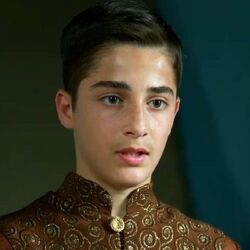
2. Rabia Sultan

3. Şehzade Selim

4. Cihannur Sultan
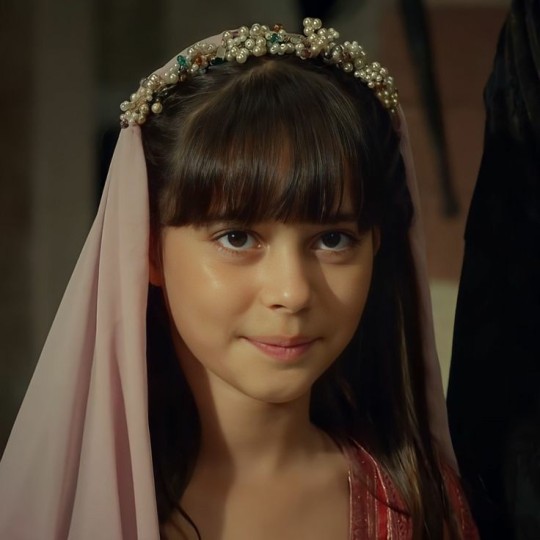
5. Şehzade Süleyman

6. Şehzade Mahmud

7. Şehzade Ahmed

8. Hanzade Sultan

9. Mihrişah Sultan

10. İsmihan Kaya Sultan

#yandere sultan murat iv x reader#yandere sultan murat iv#sultan murat iv x reader#yandere sultan 4 murat#yandere sultan murat 4#yandere sultan x reader#yandere ottoman empire#yandere magnificent century kosem
44 notes
·
View notes
Note
are you turkish/turkic at all? how did you get into turkic mythology? it’s just not a common subject, i love the fact that you are so invested 🥰
It's a long and weird answer but bear with me. 😂
A while back I played Vampire: The Masquerade - Swansong, loved Galeb Bazory, decided to write him, saw he was originally from Constantinople, was an Ottoman Prince and son of Ahmed III and originally named Şehzade Süleyman. Deciding I needed to read up more on Ottoman history, watched a few documentaries, bought a few books, find out more about Constantinople, even buying games that were set there so I could get a basic idea of what it might have been like and stuff, I discovered Galeb was loosely based on the real Şehzade Süleyman, who was an actual son of Ahmed III.
From there, I decided I needed a Turkish fc so started looking online for any that looked similar to Galeb, found Onur Tuna. Ended up leaning towards the idea of Galeb having a distant descendent that was a werewolf because irony and angst, so looked for Turkish fc's again, found Can Yaman and thought he looked perfect for a werewolf OC. Because of this, I started to look deeper into Turkish worship, Gods etc, cos I wanted his family to have authentic Turkish beliefs, or at least carry some as stories and stuff to the pack and have my werewolf OC maybe mention them at times in conversation in comparison to other beliefs he comes across in his travels.
So, then when I started reading up on them, ngl, I was genuinely fascinated and started to try and dig deeper and ended up battling with the idea of actually writing one. I ended up thinking about writing Koyash most, but for literal weeks kept trying to put it out of my mind and while I was reading more about him to see how I felt about trying to write him, I saw that Marvel comics actually mentioned Koyash and others of the Turkic Gods, so that pretty much made up my mind for me and I really wanted to use Onur Tuna again, but from a different show where he shows more emotion and is generally shown in brighter and more vibrant settings so suit Koyash in comparison to the show I use him for Galeb where he mostly looks bored or annoyed.
Then as I've been writing him I was having more thoughts about writing other Turkic deities as well, such as Yulchuk or even Erlik, but as I was thinking about writing Erlik. Looking for a Turkish fc for Erlik, I found an actor who gave me feels of not Erlik but maybe one of his sons, so I got drawn into the idea of writing one of his sons instead and here we are. 😂
But no, I'm afraid I'm not Turkish at all, I've just found myself becoming very interested in it all and have even started to try and learn Turkish with the hopes of popping over someday and being the ultimate tourist checking out palaces and stuff cos I love history and getting to see things for myself. The closest I've been is seeing it from a beach in Rhodes, but I've never actually set foot in Turkey, unfortunately. 😭
@akrasias
#akrasias#OOC:#𝙖𝙨𝙠𝙨#{ i hope that all makes sense }#{ it's 11:25pm so my brain isn't working at full capacity rn xD }
6 notes
·
View notes
Photo
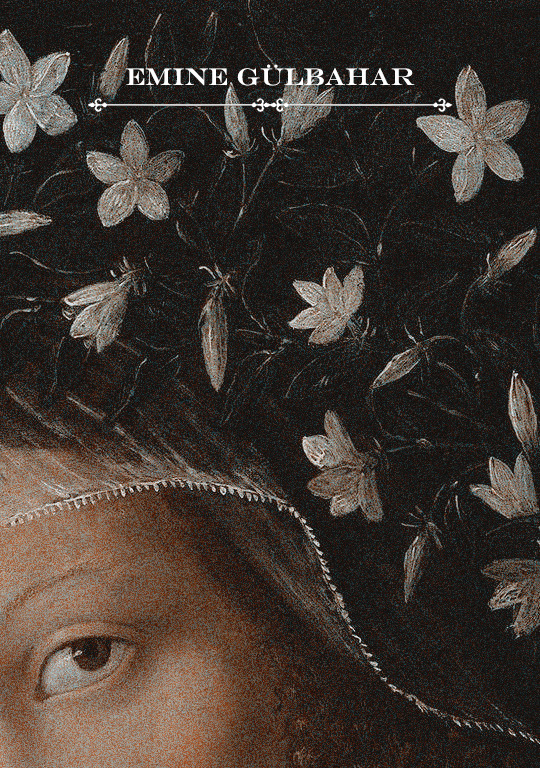


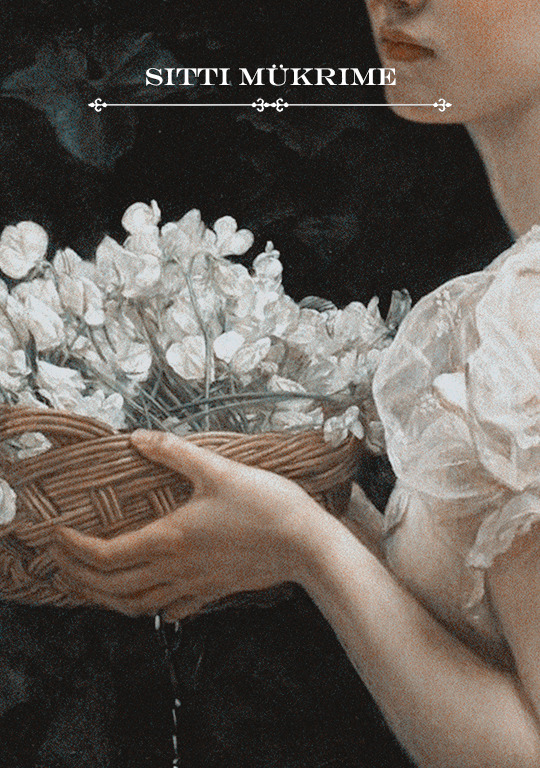




Mehmed II Conqueror + consorts (pictures are for aesthetic)
Emine Gülbahar Hatun — was a favourite consort of Sultan Mehmed II. In most sources she is referred as non-muslim slave who was converted to Islam after her arrival to the harem. There is no agreement on her origins some historians think she was Pontic Greek, Albanian or lowly Slavic. She was the mother of the future Sultan Bayezid II and Gevherhan Hatun. She died circa 1492 and was buried in her mausoleum inside the Fatih Mosque next to her late husband.
Çiçek Yagmur Hatun — was a wife or consort of Sultan Mehmed II. According to some sources she could have been Turkish noblewoman or Serbian, Greek, Venetian, French slave. She entered the harem or married Mehmed at Constantinople and gave birth to her only son Şehzade Cem (Ottoman claimant Sultan) on 22 December 1459. It is not known the degree of influence she had during Mehmed’s reign or if she even was favoured by him. She died on 3 May 1498 of plague and was buried in Cairo.
Hatice Hatun — was a thrid legal wife of Sultan Mehmed II. She was a possible daughter of Zaganos Mehmed Pasha. In 1463 she became Mehmed's third legal wife. After her husband death she remarried with a statesman.
Sitti Mükrime Hatun — was a Turkish Princess and first legal wife of Sultan Mehmed II. Her father was Süleyman Bey the sixth ruler of Dulkadir State. When Mehmed turned seventeen he married her for political purposes. Her possible offspring is unknown. Due to her middle name Sittişah is sometimes confused with Gülbahar Mükrime Hatun another consort of Mehmed. She died in September 1486 and was buried in a mausoleum built inside her mosque.
Helena Palaiologina — was a possible wife of Sultan Mehmed II. Her entering the Sultan's harem is controversial and remain unconfirmed. She was a daughter of the Despot of Morea Demetrios Paleologos the brother of Constantine XI Palaiologos the final Byzantine emperor and Theodora Asanina the daughter of Paul Asan. Some rumors says Mehmed II asked for her after his campaign in Morea having heard of her beauty. Probably he never bedded with her because he was afraid she would poison him. In another case Helena was provided with a pension and large estate at Adrianople by the Sultan though she was forbidden to marry. She died of unknown causes in 1469 or 1470 in Edirne.
Gülşah Hatun — was a second legal wife or consort of Sultan Mehmed II. There is no informations about her origins. She married Mehmed or entered his harem in 1449 when he was still a Prince and the governor of Manisa. Shortly before Murad’s II death she gave a birth to her only son Şehzade Mustafa and followed him to Konya when he became governor of the province. She died circa 1487 and was buried in Bursa in the tomb she had built for herself near that of Mustafa.
Maria Hatun — was a consort of Sultan Mehmed II. Before she entered Mehmed’s harem she was a widow of Alexander Komnenos Asen. According to some sources she was judicated as the most beautiful woman of her age. Some historians claims she could be more likely Murad’s II concubine than Mehmed’s.
Anna Hatun — was a consort of Sultan Mehmed II. Her parents were Trabzon Greek emperor David Komnenos and Helena Kantakuzenos. The marriage was initially proposed by her father, but Mehmed refused. Nontheless when Trabzon was taken in 1461 Anna entered the harem and stayed there for two years after which Mehmed married her off to Zaganos Mehmed Pasha.
#ottoman history#mehmed ii#consort#gulbahar hatun#cicek hatun#helena hatun#hatice hatun#maria hatun#sitti hatun#anna hatun#ottoman empire#aestehtic#history#historyedit#sultanate#wives#myedit#ottoman ladies
116 notes
·
View notes
Text
HUMAN LIFE
1710 Galeb was born 25th August named Şehzade Süleyman, to parents Ahmed III Sultan of the Ottoman Empire and consort Mihrişah Kadın. ( a.k.a Jeannette de Bazory )
1730 Ahmed III reign as Sultan of the Ottoman Empire ended after an insurrection initially involving 17 Janissaries, citizens and military, led by Patrona Halil on 20th September.
Fearing for her eldest son’s life, Jeannette de Bazory ( Galeb’s mother ) persuaded Galeb to hide on a ship leaving Constantinople and fake his death. He reluctantly agreed.
Her fears were proven correct and she was murdered by the Janissaries soon after.
The captain of the ship Galeb escaped on, Ohrili Fahri, decided he was a good worker and adopted him into his family.
He soon joined his adoptive family in business as a diamond merchant.
After receiving news that his mother had died, Süleyman abandoned his name, dawning the name of ’ Galeb Bazory ’ in honour of his mother and adopted a detached persona.
1733 Galeb would begin sailing the world in search of other business opportunities.
1740 Galeb met Jean Baptiste Tavernier in Cadiz, Spain.
1743 After the two became close, Galeb would open up to Jean Baptiste Tavernier who would cement his interest in turning him and later embrace Galeb.
UNLIFE
1745 With his sire wanting him to retake his throne or control it from the shadows, Galeb refuses and abandons his family and sire but continues to sporadically keep in contact with him.
1794 After travelling the world and continuing his business ventures, Galeb travelled to Andorra where he met and fell in love with Agueda Hernández.
1796 He’d admit to Agueda that he was a vampire.
1805 Agueda admits her dream of having a child and growing old with Galeb, realising he can’t give her what she wants and what he believes she deserves, he flees the country.
1806 Galeb meets a man named James Underwood, a sugar trader, who he begins to have feelings for.
1807 James and his wife have a son who they named Berel, James’ wife dies shortly after the birth.
1814 In contact with his sire, Jean Baptiste Tavernier, Galeb agrees to settle in New York.
1829 James Underwood dies, Galeb takes on Berel as his son.
1833 Berel asks Galeb to go into business with him.
1835 Berel questions why Galeb never ages, Galeb admits he’s a vampire and Berel begs him to turn him.
1869 After many years of putting it off, Galeb reluctantly embraces Berel.
1879 Disgusted by Berel’s behaviour as an immortal, Galeb abandons his childe.
8 notes
·
View notes
Text
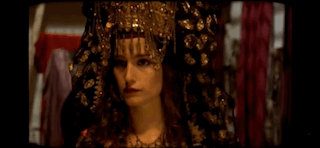
~The last Haseki Sultan~
Rabia was the consort of Ahmed II. Her date of birth and origin are unknown.On 7th October 1692, Rabia gave birth to twin şehzades Selim and Ibrahim. Sultan Ahmed II ordered huge festivales. On 14th November 1692, the Sultan rewarded Rabia with the title of Haseki Sultan and he made her wear a crown. Thus, Rabia became the last Haseki Sultan of the Ottoman Empire. Sadly, Şehzade Selim passed away on 15th May 1693. In July 1693, the mansion of late Kara Ibrahim Pasha, grand vizier during the reign of Mehmed IV, was donated and assigned to Rabia. On 23th October 1694, Rabia gave birth to her only daughter, Asiye. Ahmed II granted Rabia lands in Aleppo. Property of Ahmed's sister, Gevherhan Sultan who passed away in September 1694, was given to Asiye Sultan. It is understood from the documents,that late Gevherhan Sultan was in debt, especially the debt she owed Rabia was high. After Ahmed II passed away in Februar 1695, Rabia and Asiye left Edirne and moved to Istanbul to the Old Palace. Rabia's son Ibrahim stayed in Edirne, in care of the new Valide Sultan , Emetullah Rabia Gülnuş. Unfortunatelly, Asiye passed away on 9th December 1695. Nothing else is known about Rabia's life in the Old Palace. We can only imagine how devasted she was after loosing two of her childern, her master and beeing far away from her only living child. Rabia passed away on 14th January 1712. 370 kuruş ( ca. 4320 $) were spent on her funeral. Rabia rests next to Ahmed II, in Sultan Süleyman's tomb
youtube
8 notes
·
View notes
Text



This green and golden shirt was first worn by Şehzade Mustafa's son Süleyman in the thirteenth episode of the third season of Magnificent Century. The shirt appeared again on Şehzade Mustafa's other son Mehmed in the sixteenth episode of the fourth season. It was also worn by Sultanzade Mehmed, the grandson of Sultan Selim and Nurbanu Sultan by their daughter Şah Sultan, in the final episode of the series.
#Muhteşem Yüzyıl#Magnificent Century#period drama#costume drama#historical drama#Şehzade Süleyman#Sehzade Süleyman#Şehzade Süleyman (Son of Fatma)#Şehzade Mehmed#Sehzade Mehmed#Şehzade Mehmed (Son of Mihrünnisa)#Sultanzade Mehmed#Sultanzade Mehmed (Son of Şah)#reused costumes#recycled costumes
10 notes
·
View notes
Text
Even when she's refusing him something (in this case going to Kütahya and Manisa, not on a whim though) Hürrem looks at Cihangir with such kindness.
#she is right though - there's no way süleyman would let cihangir go so it's best she's the one who has this convo with cihangir#once again being the backstop and protective shield keeping her kids safe#hürrem sultan#şehzade cihangir#magnificent century#el sultán#muhteşem yüzyıl
2 notes
·
View notes
Text



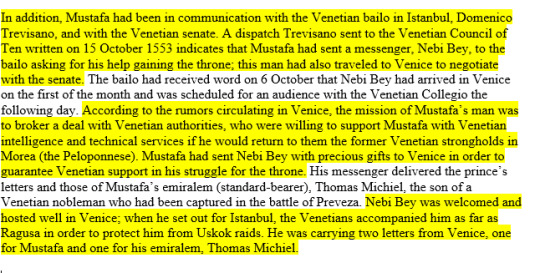
—Zahit Atçıl, Why Did Süleyman the Magnificent Execute His Son Şehzade Mustafa in 1553?
#magnificent century#ottoman history#mustafa sehzade#my caps#basically yes the persian letters were fake#but mustafa WAS in active communication with others#for valid political reasons but still
20 notes
·
View notes
Text
La moschea Ayazma

La moschea Ayazma (Ayazma camii) venne costruita nel XVIII secolo per ordine del sultano Mustafa III, in onore di sua madre, Mihrişah Emine Sultan, e di suo fratello, il principe Şehzade Süleyman. La sua costruzione fu affidata all'architetto Mehmed Tahir Ağa e riflette influenze architettoniche ottomane e barocche.
Il nome della moschea deriva da Ayazma Sarayı, un palazzo nobiliare che si trovava in precedenza sul sito.

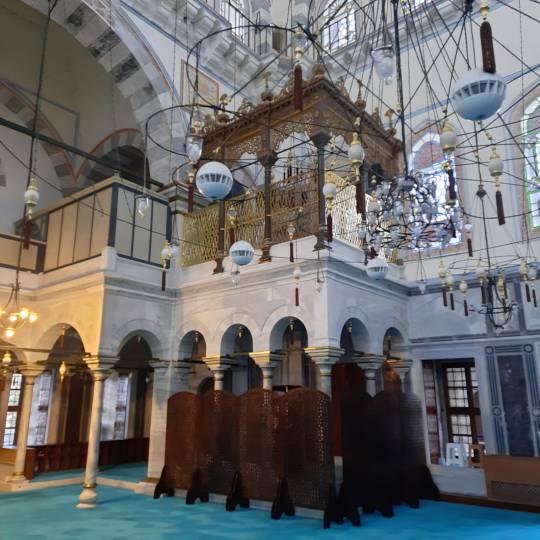
La struttura architettonica della moschea mostra influenze occidentali ed include un cortile a tre porte con una scala per l'accesso alla sala di preghiera. Possiede un minareto con un'unica balconata. La cupola centrale è sorretta da quattro pilastri. Sulle mura esterne della moschea, sono presenti le case per gli uccelli. tra le più belle di Istanbul. All'interno é notevole il pulpito (minbar) in marmo intagliato e il mihrab rosso.


Istanbul per italiani la tua guida turistica per Istanbul!
OrganizziamoᅠESCURSIONI con GUIDE TURISTICHE UFFICIALIᅠper chi vuole vivere e comprendere Istanbul. Percorsi speciali. Prezzi speciali. Adatti a tutti e con qualsiasi condizione meteo. Istanbul una metropoli caotica e affollatissima ma bellissima! Immergiti nella vita quotidiana di Istanbul e scoprila come non potresti mai fare da solo. Affidati a chi vive qui e conosce, respira e vive la metropoli sul Bosforo.
L’unica città al mondo che é su 2 continenti.
Realizziamo anche escursioni sul bellissimo lato asiatico di Istanbul! Ci sono tante cose da vedere! Ingressi ai musei senza file e senza problemi. Una esperienza diversa dal solito. Non per il turismo di massa e mercificato. Dal 2013 portiamo italiani in giro per Istanbul e li abbiamo resi felici.
Scopri la nostra offerta e scopri la differenza.
La mia Vita a Istanbul: consigli e informazioni turistiche. Disponibile come GUIDA per delle ESCURSIONI in città.
Scrivi una e-mail a: istanbulperitaliani@gmail
Seguici anche suᅠwww.facebook.com/istanbulperitaliani
5 notes
·
View notes
Text


As a living descendent of Şehzade Süleyman, ( Galeb Bazory ) Selim refers to Galeb as his uncle just as Galeb refers to Selim as his nephew. However, it should be noted that Selim is far more likely to mention Galeb rather than Galeb mentioning Selim due to the fact that Selim is a werewolf. But if interacting with a human who doesn't know what he is, there's more of a chance that Galeb may mention his 'nephew'.
6 notes
·
View notes
Text
ORHAN GAZİ
1281-1360 yılları arasında yaşadı.
Osman Gazi'nin oğludur. Annesi Mal Hatun'dur.
Saltanat müddeti 1326-1360 yılları arasındadır.
Türbesi Bursa'dadır.
Orhan Gazi, hasta olan babasının yerine 1320 senesinden itibaren sefer işlerini yürütüyordu. İlk iş olarak Mudanya'yı fethetti. (1321)
Orhan Gazi, 1325 yılında hazırlıklarını tamamlayarak uzun bir süredir kuşatma altında bulunan Bursa üzerine yürüdü. İlk önce Bursa yakınındaki Orhaneli fethedildi.
1326 tarihinde Bursa Osmanlı'ya teslim edilmiştir.
1326 senesinde Konur Alp, Akyazı, Konurpa (Düzce), Bolu ve Mudurnu'yu fethederken Akçakoca'da Kandıra'yı Osmanlı topraklarına katmıştır.
III. Andronikos (1329)'da Orhan Gazi'nin topraklarını almak istedi. Bunu haber alan Orhan Gazi İznik muhasarasına bir miktar asker bırakarak, seçme olan sekiz bin mevcutlu kuvvetlerin başında olarak Pelekanon (Gebze, Darıca bölgesi) mevkiinde bizzat imparatorun kumandasındaki Bizans ordusuyla çarpıştı.
Sonra İznik bizanstan alarak fethetti.
İzmit ise bundan 6 sene sonra, 1337'de şiddetli bir tazyik ile açlık yüzünden teslim oldu.
Orhan Gazi Dursun Bey ile birlikte Karesi topraklarına girip, şehirleri bir bir ele geçirmeye başladı. Bursa'ya götürülen Demirhan Bey iki yıl sonra burada ölünce bütün Karesi toprakları Osmanlıların eline geçti. Orhan Gazi 1345'te fethi tamamlanan Karesi bölgesinin idaresini oğlu Süleyman Paşa'ya verdi.
1352'de veliaht Şehzade Gazi Süleyman Paşa Dimetoka Meydan Muharebesi'nde İstanbul'a yürümeye niyetlenen müttefik Sırp, Bulgar ordusunu kolayca dağıttı. Bundan dolayı minnettar olan İmparator 1353'te Gelibolu Yarımadasını ve Çanakkale Boğazı'nın Avrupa kıyısı üzerindeki Küçük Çimpe Kalesini Süleyman Paşa'ya hediye etti. Bu surette Osmanlı resmen ve hukuken Avrupa kıtasında ilk toprağını elde etmiş oldu.
Orhan Gazi, bir ahi şehri olan, Ankara'nın fethi için Süleyman Paşa'yı görevlendir di. Bursa'dan hareket eden Süleyman Paşa küçük bir Türk beyliğinin elinde olan Bolu ve Gerede'yi ele geçirdikten sonra Ankara'ya geldi. Çevresi ile beraber o bölgeyi aldı ve Bursa'ya döndü. (1354)
45 yaşında ölen Süleyman Paşa 3,5 yılda bütün Gelibolu yarımadasını aldı. Kuzeyde Lüleburgaz'a kadar fethetti. Batı Meriç ırmağına dayandı. Lüleburgaz'la beraber aynı yıl Çorluda fethedildi. Osmanlı şehzadeleri içinde en göz dolduran kişilerden oldu.
1361 baharında Şehzade Murad ve uç beyleri tüm kuvvetleri ile Edirne üzerine yürüdüler. Bizans komutanı Osmanlı ordusunu Sazlı Dere'de karşıladı, yenilip Edirne'de kapandı." I. Murad Şehzade iken Edirne'yi kuşattı. Sultan olduğunda ise almıştır.
Orhan Gazi babasından devraldığı 16 bin km2 toprağı 95 bin km2'ye çıkarmıştır.
Orhan Gazi'nin Ölümü, Kişiliği, Şahsiyeti ;
79 Yasında ölen Orhan Gazi en uzun ömürlü Osmanlı padişahı olmuştur.
Ömrü at sırtında geçmiştir. Uzun boylu, beyaz tenli, iri ve mavi gözlüydü. Zeki ve teşkilatçıydı. Azimli ve cömertti. Hayır ve hasenatı severdi. Burnu kavisli, kaşları sık, geniş göğüslü, sakalı, bıyığı sık ve parlak idi.
4 notes
·
View notes